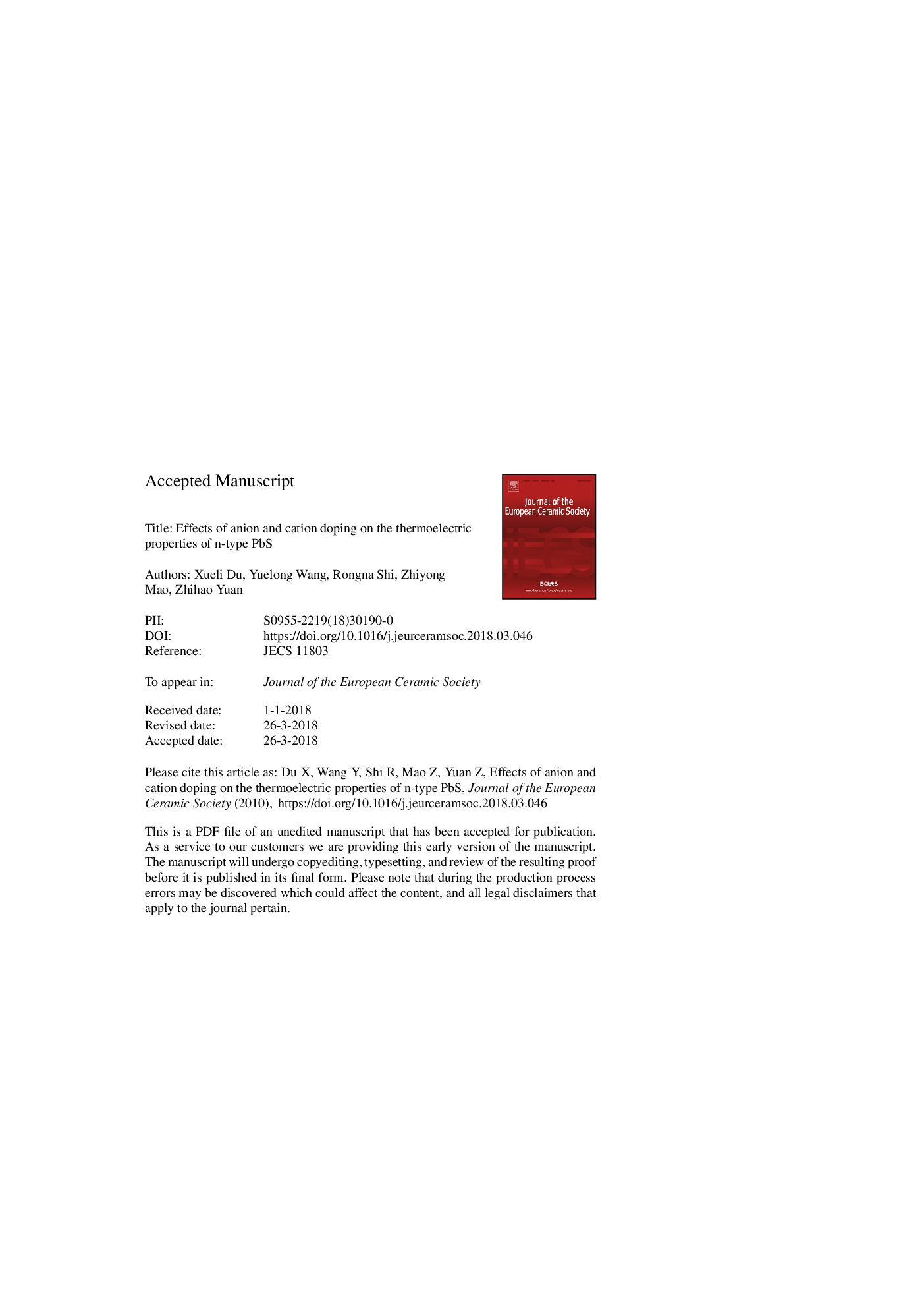| Article ID | Journal | Published Year | Pages | File Type |
|---|---|---|---|---|
| 7898058 | Journal of the European Ceramic Society | 2018 | 14 Pages |
Abstract
The PbClxS1-x and Pb1-xBixS (x⯠=â¯0-0.05) bulks were fabricated with a facile method of hydrothermal synthesis and microwave sintering, and the effect of anionic and cationic donors on the thermoelectric performance of PbS was investigated. Although Clâ and Bi3+ both effectively improved the thermoelectric properties of n-type PbS, more excellent thermoelectric performance was obtained from Clâ doped samples because of higher electrical property and lower thermal conductivity at higher temperature (T⯠>â¯600â¯K). The thermoelectric figure of merit (ZT) reaches 1.04 for PbCl0.015S0.985 at 800â¯K and increases with temperature increasing without sign of saturation, which is probably the highest value ever reported for single-phase polycrystalline n-type PbS. The results also indicate that the hydrothermal synthesis and microwave sintering can realize anion doping as well as cation doping for n-type PbS at low cost, and PbS should be a robust alternative for PbTe thermoelectric materials.
Related Topics
Physical Sciences and Engineering
Materials Science
Ceramics and Composites
Authors
Xueli Du, Yuelong Wang, Rongna Shi, Zhiyong Mao, Zhihao Yuan,
